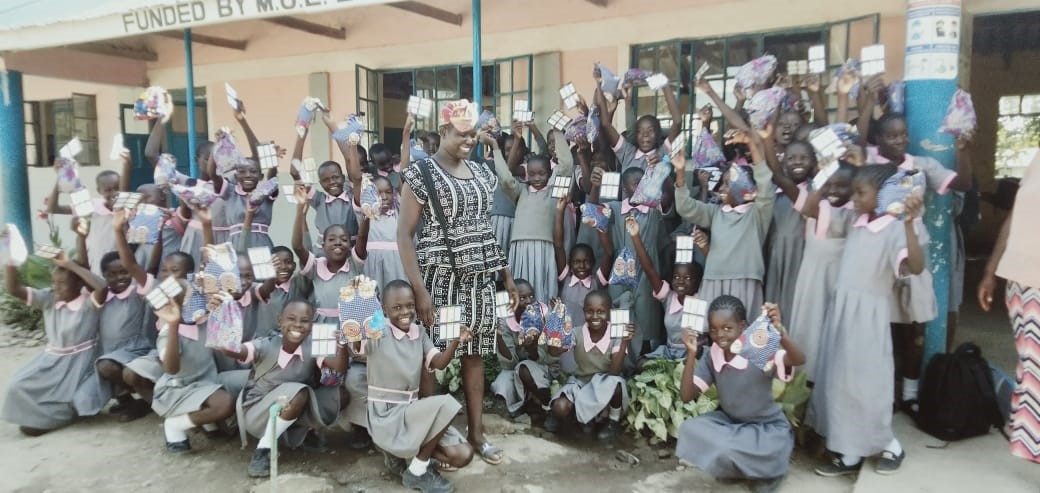
Mission
The mission of The MoonCatcher Project (MCP) is to optimize girls’ lives worldwide by removing barriers related to menstruation. MCP’s primary service areas are Uganda (Wakisa, Pallisa, Jinja, Kimenyede), Malawi (Mtunthama, Nkhata Bay – at a vocational school for deaf students, Malengmzoma /Chituka), and Kenya (Kisumu) and India (New Delhi).
Life Challenges of the Women Served
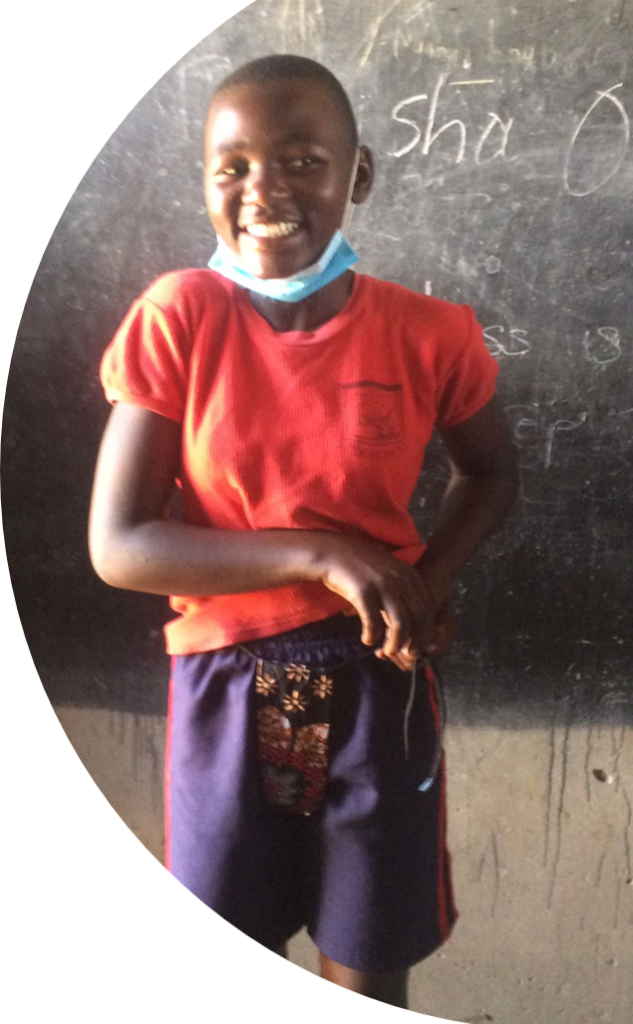 For many low-income families around the world, menstrual hygiene products are unavailable or unaffordable. In addition, misconceptions regarding menstruation are widespread and there is a general culture of silence surrounding the topic. This is due to many factors, including gender inequality, discriminatory social norms, cultural taboos, poverty, and a lack of basic services like toilets and sanitary products. The situation is worse in rural areas and for girls who attend public schools.
For many low-income families around the world, menstrual hygiene products are unavailable or unaffordable. In addition, misconceptions regarding menstruation are widespread and there is a general culture of silence surrounding the topic. This is due to many factors, including gender inequality, discriminatory social norms, cultural taboos, poverty, and a lack of basic services like toilets and sanitary products. The situation is worse in rural areas and for girls who attend public schools.
Many adolescent schoolgirls miss school and/or do not concentrate well during their menses. At least 10 percent of girls in rural Sub-Saharan African communities miss school during their periods due to lack of access to menstrual hygiene products and lack of knowledge about their cycles. This causes them to fall behind in their studies and potentially drop out of school.
Combined with a pandemic that has disrupted education for billions of children, the picture for girls is even more dire. Education is the most effective means of improving the lives of girls in the communities with the lowest financial resources (with family incomes averaging less than $2 per day), but menstruation can also create a significant barrier to completing a girl’s education. Traditional menstrual hygiene products are a luxury many families simply cannot afford. Girls often drop out of school when they reach puberty. Early dropout rates for these girls are a worrisome trend that can lead to early marriage, childbearing at an early age, and a lack of financial independence.
The Project
The MoonCatcher Project (MCP) removes barriers related to menstruation. MCP provides the knowledge and supplies needed to manage menstruation with dignity and confidence, thereby increasing a girl’s chance of staying in school, avoiding early marriage, and enjoying greater economic security. As a result, this simple, yet profound solution has the potential to change a girl’s life. This project takes place in Malawi, Uganda, and Kenya, where MCP will work with local sewing cooperatives to produce and distribute 15,000 free MoonCatcher Menstrual Management Kits. By engaging these tailors, many of whom are women, MCP also financially empowers local women and bolsters their local economies. MCP will also work with regional schools to both distribute the kits and to provide reproductive health curriculum.
MCP’s work aligns directly with Together Women Rise’s mission “to cultivate the power of community to achieve global gender equality” and its vision of a “world where every person has the same opportunities to thrive regardless of their gender or where they live.” With a MoonCatcher kit, a girl has a better chance of completing secondary school. By educating girls, families become healthier and happier. Girls with an education are more likely to make more money and contribute to economic growth, and according to UNWomen, research indicates that when more income is put into the hands of women, the result is improvement in child nutrition, health, and education.
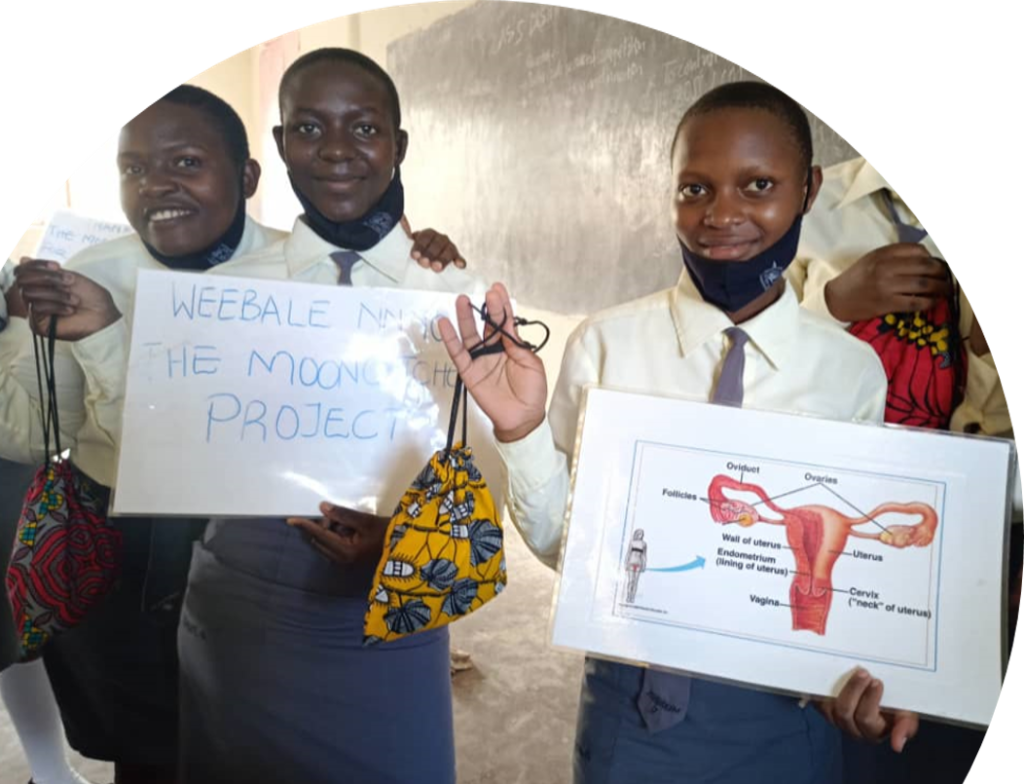 The MoonCatcher Project provides three key services:
The MoonCatcher Project provides three key services:
- Production and distribution of menstrual pad kits with reproduction health education.
- Supporting sewing and soap-making cooperatives.
- Raising funds and awareness.
MoonBees (old fashioned sewing bees) cooperative members produce kits. MCP supports four sewing cooperatives and one soap making cooperative in Uganda, three sewing cooperatives in Malawi, and one sewing cooperative in Kenya where 42 low-income women (and one man) produce the kits. Cooperative members are selected by coordinators and must already know how to sew. In Uganda, at least one cooperative focuses on single mothers, helping them to gain self-sufficiency. MCP cooperative members reside in rural, low-income communities. They all have struggled to earn income and have few options for employment.
MCP provides all equipment and all materials needed for kit production to each cooperative, along with monthly stipends for the coordinators. Cooperative members produce MCP kits and are paid $1.50 per kit. The tailors are then free to use MCP equipment to earn additional income by taking in other sewing work. Once purchased, the equipment becomes the property of the cooperative members who are free to use it as they see fit. MCP’s in-country coordinators oversee kit production and then visit schools where girls receive kits free of charge.
Each MoonCatcher kit includes:
- a carrier with a waterproof barrier that ties around the waist and expands as a girl grows
- three washable absorbent pads
- a waterproof bag where used pads can be stored and then washed with a small amount of water
- a calendar to help girls to track their cycles
- and a care tag with visual instructions on caring for the kit.
The MoonCatcher Kit is unique as the pads can be worn without underwear. This is important, as underwear is an unaffordable luxury for many of these girls. With proper care, the kits last up to 5 years.
During the pandemic, many of MCP’s tailors worked at home. School closures made it difficult to distribute kits to girls who weren’t attending school. With the primary population out of reach, kits created during the early part of the pandemic were distributed to women and girls in local communities, non-profit organizations, and prisons. Several of MCP’s sewing cooperatives also produced face masks for their communities with funding from MCP.
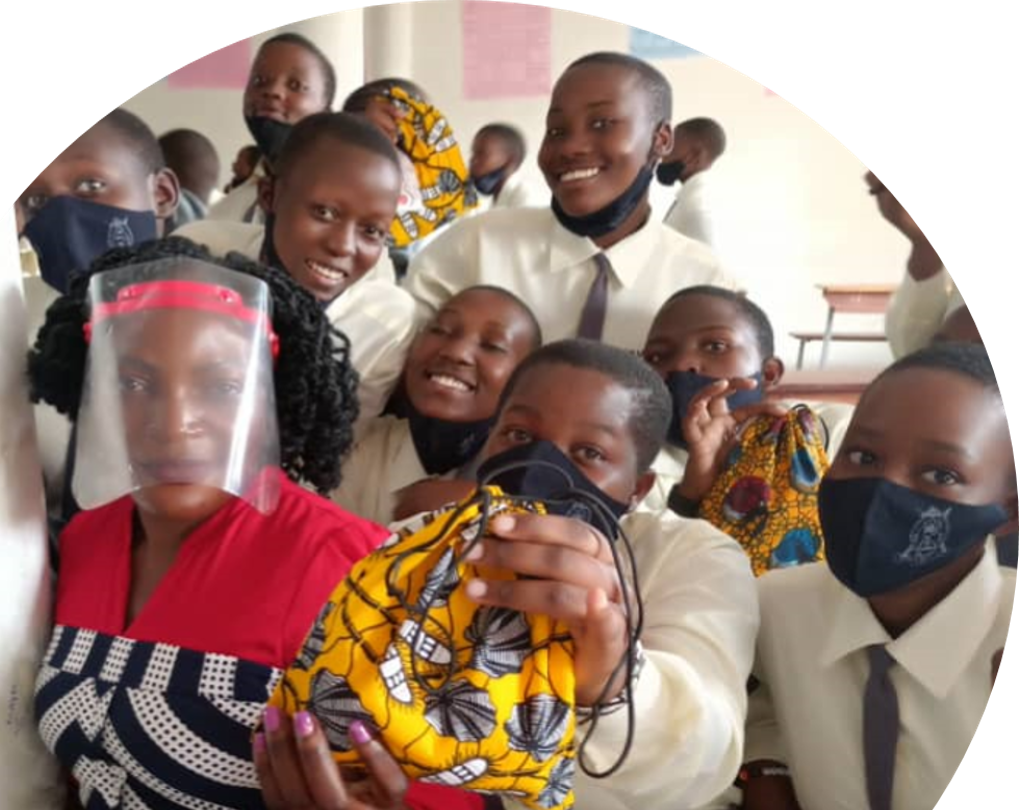 Coordinators distribute kits and provide reproductive health curriculum to regional schools. The schoolgirls are given the kits free of charge along with a menstrual management and reproductive health curriculum at the time of kit distribution. Coordinators provide an information session using MCP’s reproductive health curriculum. Students learn how to use and care for the kit, how to plot their cycles, and are given an opportunity to envision and articulate their goals. Schools are selected by coordinators, based on the income levels of families served. Low-income communities are the focus of distribution.
Coordinators distribute kits and provide reproductive health curriculum to regional schools. The schoolgirls are given the kits free of charge along with a menstrual management and reproductive health curriculum at the time of kit distribution. Coordinators provide an information session using MCP’s reproductive health curriculum. Students learn how to use and care for the kit, how to plot their cycles, and are given an opportunity to envision and articulate their goals. Schools are selected by coordinators, based on the income levels of families served. Low-income communities are the focus of distribution.
Now that schools have reopened in Kenya, Malawi, and Uganda, MoonCatcher coordinators are delivering the kits and reproductive health curriculum to girls in schools. Although the curriculum is designed specifically for girls when they receive kits, MCP has adapted the curriculum for a male audience as well, and it is taught to boys in Uganda. MCP plans to begin using the boys’ curriculum in the other countries in 2023. MCP also provides its partner organizations and others distributing their kits with reproductive health curriculum, which is required as part of any kit distribution effort.
Coordinators report progress and needs to MCP. MCP conducts frequent research to stay informed and better understand the problem and best practices to solve it. Girls using MCP kits are frequently asked for feedback about the kits, and the pad has been redesigned twice based on this valuable feedback. Cooperative members all contribute to decision making regarding production of kits.
This project directly serves 15,000 schoolgirls in Uganda, Malawi, and Kenya from largely rural and low-income communities where family income can be as low as $2 per day. Girls who have received MCP’s health curriculum and kits share how having the kit has allowed them to continue their studies and helped them to achieve their educational goals. In addition, eight existing sewing cooperatives will continue to operate. Forty-three cooperative members and three coordinators will continue to earn income by producing and distributing MCP kits. These in-country coordinators have all faced hardships due to the economic problems in their countries and the pandemic.
MCP’s long-term vision for the Africa project is that cooperatives will become increasingly independent.
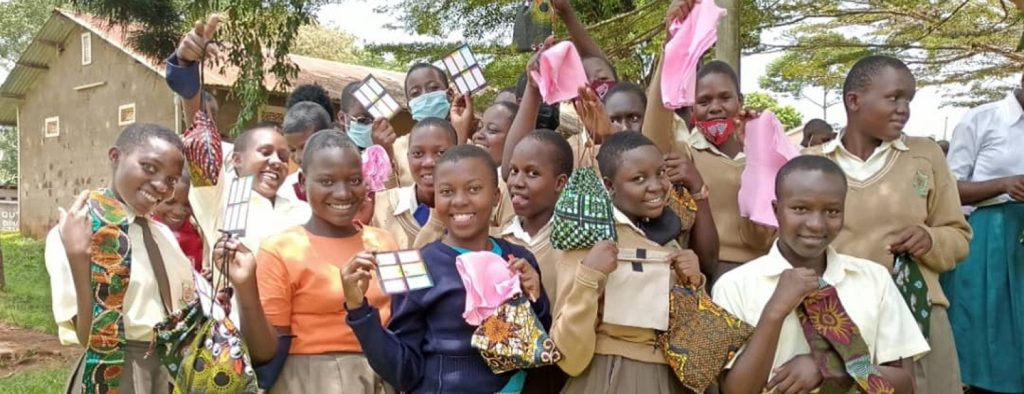
Direct Impact: 15,000 girls; Indirect Impact: 43 tailors, 3 coordinators, and local communities
UN Sustainable Development Goals
![]()
![]()
![]()
![]()
![]()
![]()
Questions for Discussion
- How might family dynamics change when girls are no longer hindered by monthly periods?
- What are the advantages of including curriculum specifically for boys?
- How do you think this project promotes gender equality?
How the Grant Will be Used

Why We Love This Project/Organization
This project celebrates the dignity of girls and their bodies. By giving girls the tools to manage their periods and stay in school, MCP helps build economic security for the girls and their communities. We love that this is a new design with washable menstrual pads that can be worn without underwear. The kits are made by sewing co-ops, and the sewers are able to use the machines for their own businesses. We also love the fact that, in some countries, the programming includes an institution that works with girls who are hearing impaired, and boys are included in the educational workshops wherever possible.
Evidence of Success
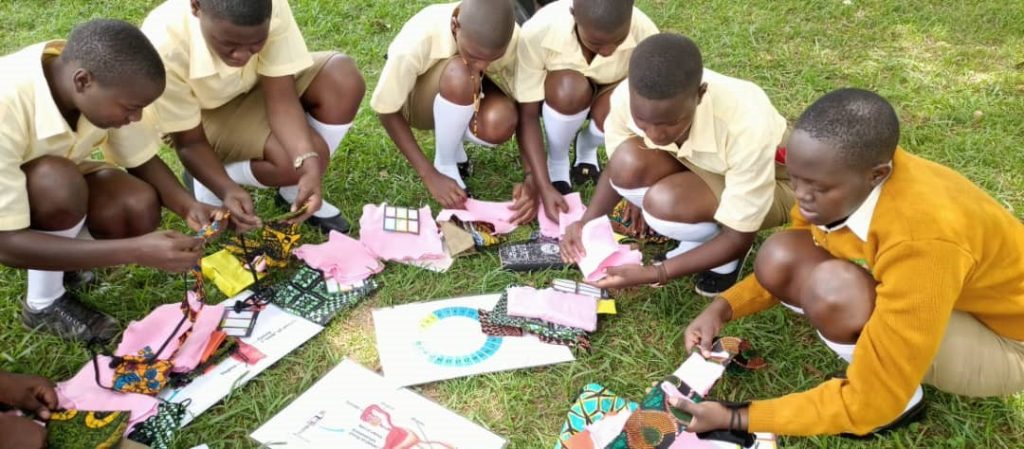 During focus group interviews, MCP delegation members have heard countless girls say that they wear MCP pads comfortably and confidently and that it helps them to miss fewer days of school. Since instituting MCP’s boys’ curriculum in Uganda, teachers and school administrators say that they see fewer instances of boys teasing girls.
During focus group interviews, MCP delegation members have heard countless girls say that they wear MCP pads comfortably and confidently and that it helps them to miss fewer days of school. Since instituting MCP’s boys’ curriculum in Uganda, teachers and school administrators say that they see fewer instances of boys teasing girls.
The number of MoonCatcher Kits produced and delivered in Uganda, Malawi and Kenya with reproductive health curriculum continues to increase each year:
- 2018: 6,450
- 2019: 10,164
- 2020: 12,670 (plus face masks)
- 2021: 14,347
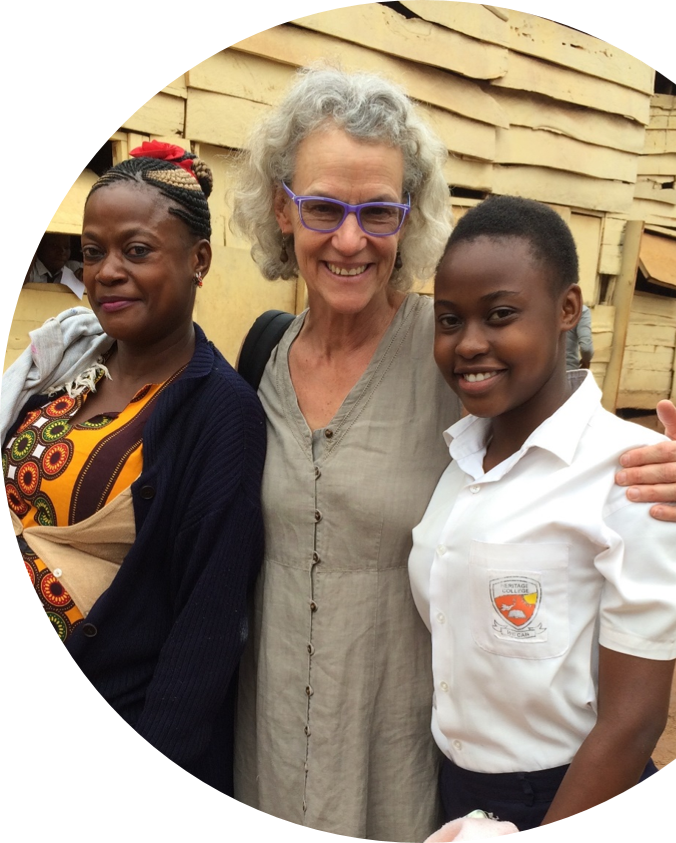 MCP Founder Ellie von Wellsheim and The MoonCatcher Project have received the following:
MCP Founder Ellie von Wellsheim and The MoonCatcher Project have received the following:
- The National George H.W. Bush Points of Light Award
- The Schenectady Professional and Business Women’s Club Award
- The Women of Achievement Award from the YWCA of Northeastern New York
- Recognition from The Empowerment Project of Saratoga
- Zonta International District 4 Community Award
- WASH Rotarian Action Group (WASHrag) Video Competition winner
- Scotia, NY Rotary Club Citizen of the Year
- MCP Highlighted by IMHER (International Menstrual Health Entrepreneurship Roundup).
Voices of the Girls
From project participants in Uganda:
• “I come to school because I want to be a teacher and help the children of Uganda.”
• “I come to school to be able to participate in politics and make changes in our communities.”
• “I come to school in order to get a job and help my mom.”
About the Organization
The MoonCatcher Project was created in 2011 to help keep girls in low-income communities from missing school due to their menstrual periods. After attending a lecture and learning that girls in these communities used unsanitary items such as dung, plastic bags, old rags, or cloths to manage their periods, MCP’s founder, Ellie von Wellsheim, designed a reusable, washable pad that can be worn without underwear (a luxury in many communities). This pad and its components make up the MoonCatcher kit.
In 2014, Ellie partnered with Phoebe Nabwami, a teacher and MCP Coordinator in Uganda and began to develop a network of volunteers and tailors around the world to create and distribute MoonCatcher Kits to girls in need. Ellie and Phoebe have traveled to countless communities to teach girls about menstrual management and to train tailors in kit production. So far, more than 100,000 kits have been manufactured by MCP tailors and volunteers and then distributed around the world.
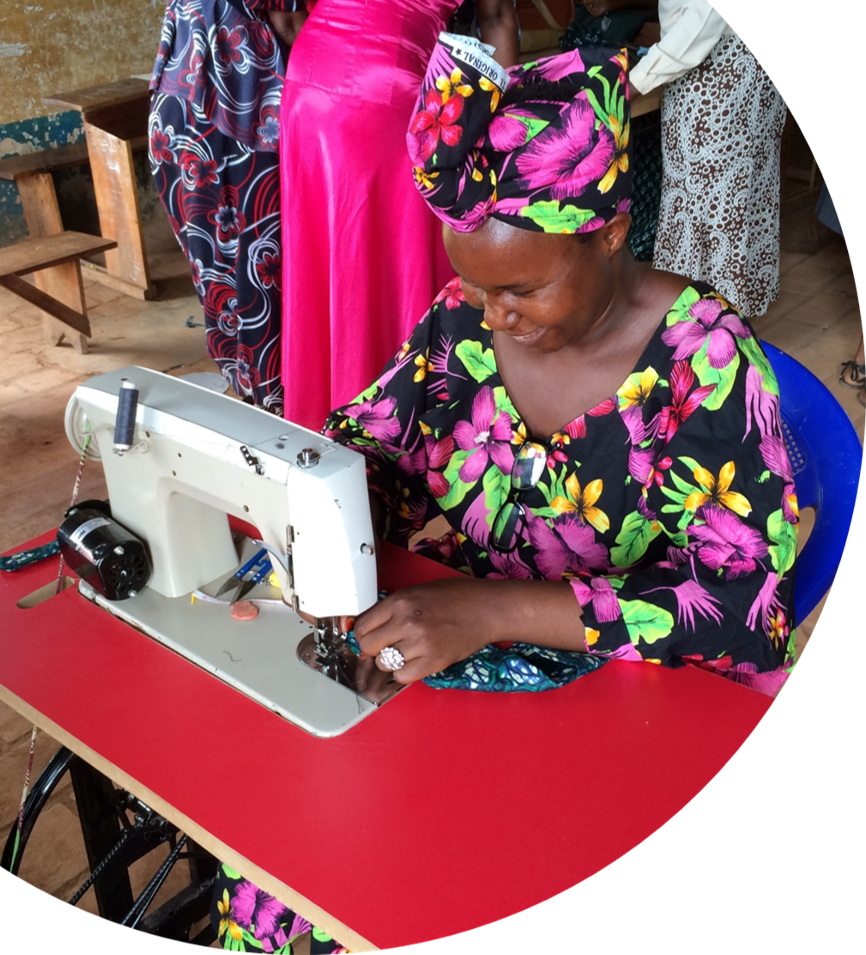 In 2011, monthly MoonBees were established in U.S. locations for the purpose of creating the reusable menstrual pad kits. In 2014, in an effort to further support women and girls, the project evolved and established its first sewing cooperative in Uganda. This model was then replicated, creating a total of three other cooperatives in Uganda, three in Malawi, and one in Kenya. All of these cooperatives are funded by The MoonCatcher Project. In addition to the sewing cooperatives in Africa, MCP has a sewing center in India.
In 2011, monthly MoonBees were established in U.S. locations for the purpose of creating the reusable menstrual pad kits. In 2014, in an effort to further support women and girls, the project evolved and established its first sewing cooperative in Uganda. This model was then replicated, creating a total of three other cooperatives in Uganda, three in Malawi, and one in Kenya. All of these cooperatives are funded by The MoonCatcher Project. In addition to the sewing cooperatives in Africa, MCP has a sewing center in India.
Since the pandemic lockdowns, MCP’s project has expanded in new ways to support independent sewing cooperatives. These independent cooperatives are not funded by The MoonCatcher Project, but they do use the MCP pattern and do have access to technical assistance from MCP. Currently, there are independent cooperatives in Nigeria, Zimbabwe, and the Philippines.
MCP uses the feedback gained from focus groups with students, teachers, administrators, and local community members to inform this work. As a result of this feedback, the design of the pad has been changed and improved. Conversations with teachers led to developing a reproductive health curriculum that was originally taught to girls. MCP has also developed a health curriculum to include educating boys regarding menstruation and reproductive health that is currently being used in Uganda, with plans to expand its use to Kenya and Malawi. MCP coordinators work closely with teachers to support students who have received the kits and to help expand MCP’s ability to distribute kits.
Where They Work
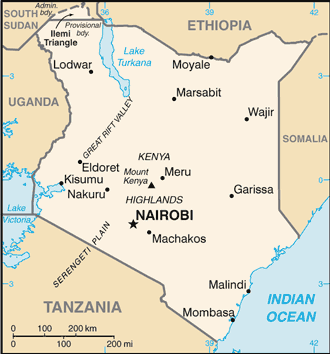
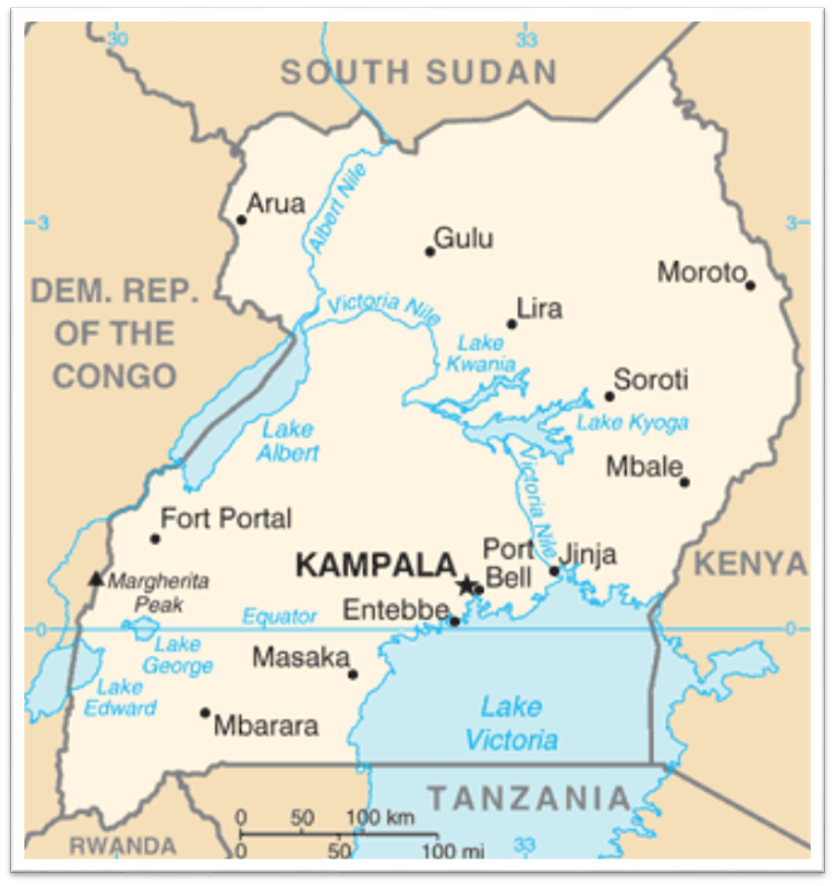
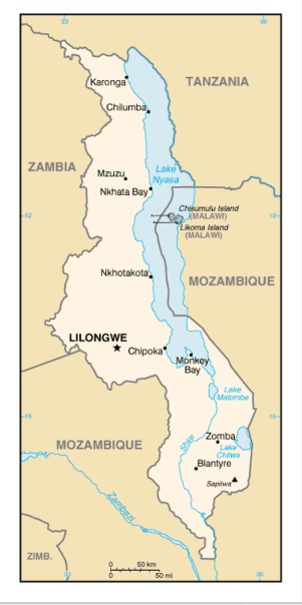
UNESCO has reported that 1 in 10 girls in Sub-Saharan Africa misses school due to their menstrual cycle. By some estimates, days missed can be much as 20 percent of a given school year. Many girls drop out of school altogether once they begin menstruating.
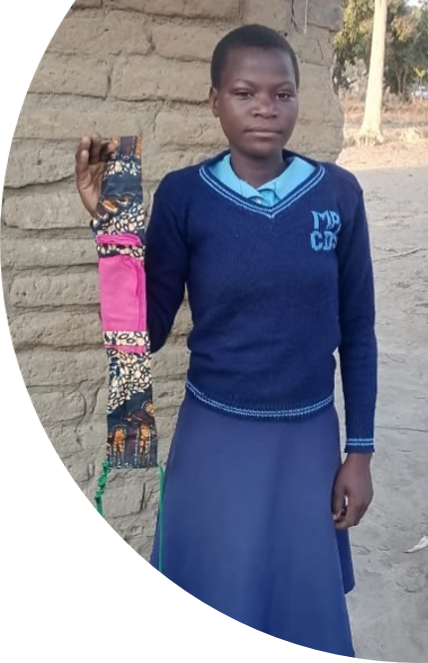 Women in Sub-Saharan Africa endure many challenges. Child and early marriage are a serious problem, as are high adolescent birth rates. Although the fertility rate has declined, it is still the highest in the world. Gender inequality is rampant and reinforced by discriminatory laws. In many areas, women are not allowed to own or inherit land. Women take the brunt of (unpaid) domestic life, caring for children as well as aging family members.
Women in Sub-Saharan Africa endure many challenges. Child and early marriage are a serious problem, as are high adolescent birth rates. Although the fertility rate has declined, it is still the highest in the world. Gender inequality is rampant and reinforced by discriminatory laws. In many areas, women are not allowed to own or inherit land. Women take the brunt of (unpaid) domestic life, caring for children as well as aging family members.
Even when laws exist, exceptions are made at the expense of women and girls. For instance, many countries state the legal age for marriage is 18, yet child marriage occurs on a regular basis. In some countries, women are required by law to obey their husbands and cannot apply for a passport like a man. Although laws prohibiting domestic violence exist, 1 out of 5 women in the region has endured physical or sexual violence.
Public services play a critical role in lessening women’s physical and emotional burdens. Access to reproductive services is key, as is access to paid work. In both cases, it helps put a woman on even footing with her partner and raises the standard of living for her and her family.
Kenya
Kenya has experienced dramatic population growth since the mid-20th century as a result of its high birth rate and its declining mortality rate. More than 40 percent of Kenyans are under the age of 15 because of sustained high fertility, early marriage and childbearing, and an unmet need for family planning. Kenya’s persistent rapid population growth strains the labor market, social services, arable land, and natural resources. Agriculture remains the backbone of the Kenyan economy, contributing one-third of GDP. About 75 percent of Kenya’s population work at least part-time in the agricultural sector, including livestock and pastoral activities. More than 75 percent of agricultural output is from small-scale, rain-fed farming or livestock production. However, currently, an exceptional shortfall in aggregate food production and supplies due to drought conditions is causing high food insecurity.
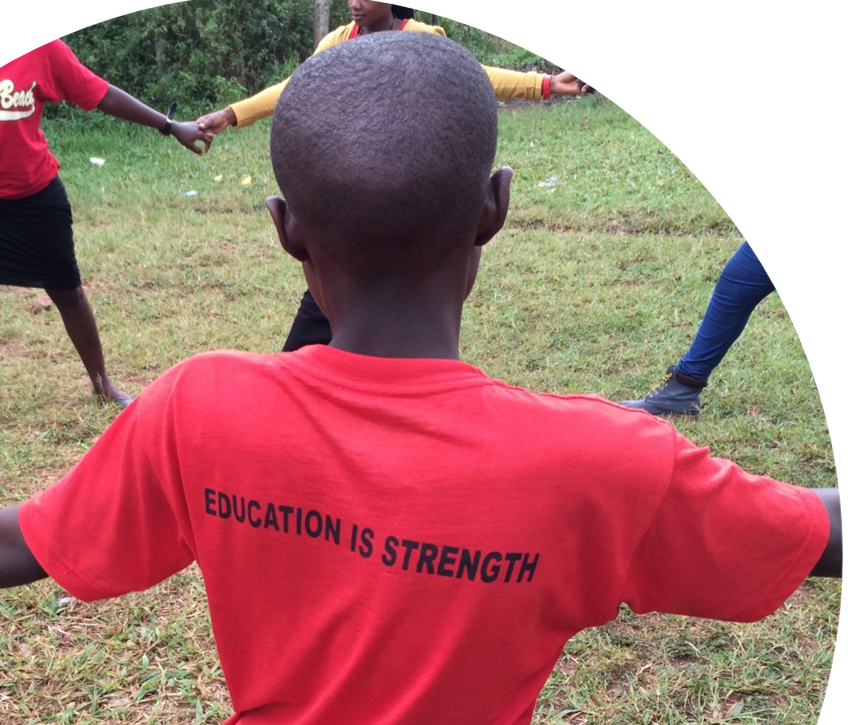
Uganda
Uganda has one of the youngest and most rapidly growing populations in the world. Its total fertility rate is among the world’s highest at 5.8 children per woman. Except in urban areas, actual fertility exceeds women’s desired fertility by one or two children, which is indicative of the widespread unmet need for contraception, lack of government support for family planning, and a cultural preference for large families. High numbers of births, short birth intervals, and the early age of childbearing contribute to Uganda’s high maternal mortality rate. Gender inequities also make fertility reduction difficult; women on average are less educated, participate less in paid employment, and often have little say in decisions over childbearing and their own reproductive health.
Malawi
Landlocked Malawi ranks among the world’s least developed countries. The country’s economic performance has historically been constrained by policy inconsistency, macroeconomic instability, poor infrastructure, rampant corruption, high population growth, and poor health and education outcomes that limit labor productivity. The economy is predominately agricultural with about 80 percent of the population living in rural areas. Agriculture accounts for about one-third of GDP and 80 percent of export revenues. The total population of Malawi is approximately 20.3 million (July 2021 est.), with 51.5 percent of the population living below the poverty line.
A closer look at the benefits of education and intervention for managing menstruation
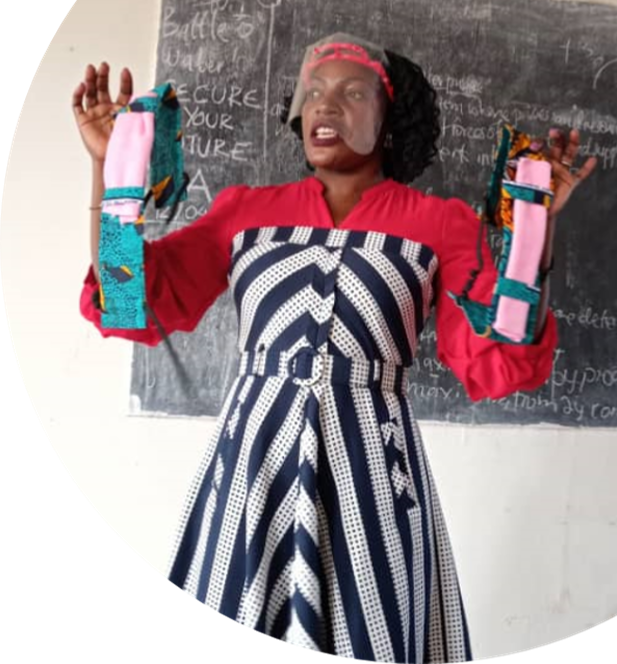 According to UNICEF, half the schools in low-income countries lack adequate water, sanitation, and hygiene services crucial to enable girls and female teachers to manage menstruation. However, studies show that targeted interventions improve menstrual hygiene knowledge and awareness. Schools that have female-friendly facilities and incorporate information on menstruation into the curriculum for both girls and boys can reduce stigma and contribute to better education and health outcomes.
According to UNICEF, half the schools in low-income countries lack adequate water, sanitation, and hygiene services crucial to enable girls and female teachers to manage menstruation. However, studies show that targeted interventions improve menstrual hygiene knowledge and awareness. Schools that have female-friendly facilities and incorporate information on menstruation into the curriculum for both girls and boys can reduce stigma and contribute to better education and health outcomes.
Studies have also shown a link between menstruation and educational outcomes. Researchers have found that participants perceived a strong association between inadequate menstrual health management (MHM) and absenteeism and poor classroom performance. A study conducted in Kenya noted that schoolgirls find their periods distract them from schoolwork, cause them to fear being ostracized by other girls, or can lead to sexual harassment from boys. A study from Uganda indicated that around 25 percent of schoolgirls have been absent from school at least twice per term due to MHM issues, including pain, lack of products, or fear that the class would make fun of them.
Most research to date has described menstrual hygiene knowledge, attitudes, practices, mainly in sub-Saharan Africa and South Asia. Many school-based studies indicate poorer menstrual hygiene among girls in rural areas and those attending public schools. The few studies that have tried to improve or change menstrual hygiene practices provide moderate to strong evidence that targeted interventions do improve menstrual hygiene knowledge and awareness.
Source Materials
United Nations Department of Economic and Social Affairs
Social Institutions and Gender Index
Additional reading:
International Women’s Development Agency
Women in International Security
Children’s Hospital of Philadelphia’s Policy Lab

